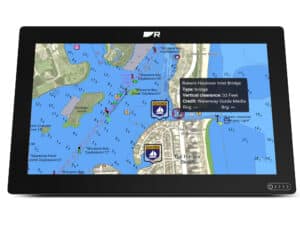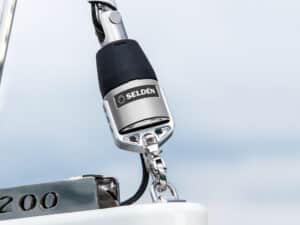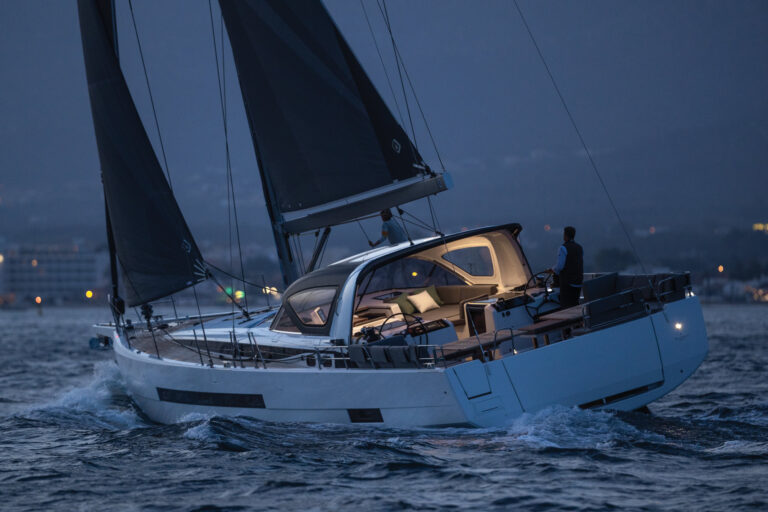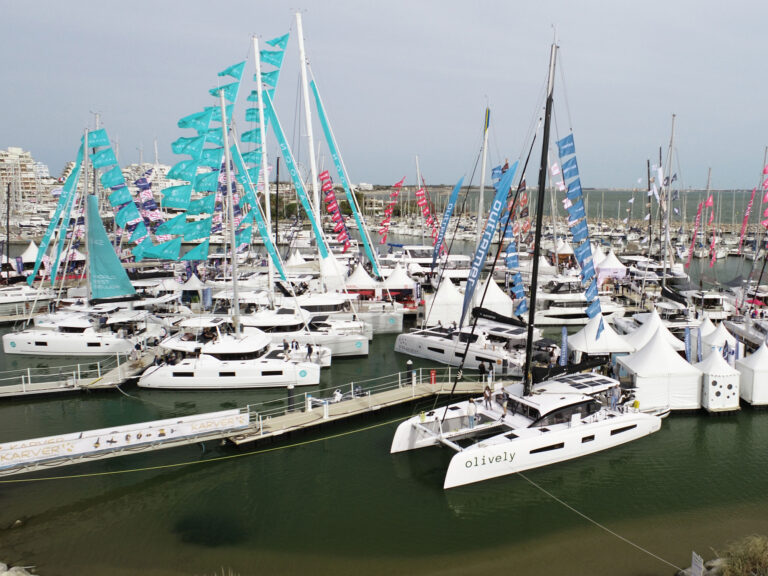
It’s fair to say that the marine industry is having a moment, likely spurred by at least three significant factors: the still-churning pandemic, a buoyant stock market, and historically low interest rates. While this is great news for many marine-facing businesses, the on-the-dock reality is that the brokerage markets have been scoured, and the wait times for new boats are being quoted in years rather than months. While this is quite a lengthy wait time, sailors looking for kit will find that the equipment tents at upcoming winter shows are filled with new innovations and electronics that can help breathe fresh life into the boat you have now. Here’s a roundup, then, of new electronics gear you might want to check out for any projects and upgrades that you’re pondering for 2022.
Airmar: If you’re interested in attaining next-level control, connectivity, and communication across your vessel’s various systems and networks, Airmar’s SmartBoat System is worth your attention. Third-party sensors such as thermometers or DC-voltage monitors connect directly to a nearby SmartBoat module, which converts their protocol to NMEA 2000 and then wirelessly communicates this information with other networked SmartBoat modules over enterprise-grade Wi-Fi.
This hybrid hard-wired/wireless architecture saves boat owners the cost and complexity of installing sensor hubs and cabling between modules, while also allowing owners (or installers) to check the status of their system and its sensors via Airmar’s CAST app or its SmartFlex View browser-based tool, the latter of which also includes user-configurable SmartFlex Alerts. Owners can connect a variety of NMEA 2000 and analog sensors to each SmartBoat module to know at a glance what’s going on from stem to stern.
Fusion Entertainment: Stereo-maker Fusion is (almost) never one to come to the fall-boat-show parties empty-handed, and the 2021/2022 season was no exception. Fusion’s latest audiophile offerings include the MS-RA60 marine stereo, which delivers premium-level features and can be paired with the XS Series 6.5-inch speakers and 10-inch subwoofer, which combined, deliver ear-pleasing acoustics without breaking the bank. The MS-RA60 features clean-looking aesthetics and a user interface that includes a rotary knob, six hard buttons, and an anti-fogging, edge-bonded display. The stereo is built to IPX6 and IPX7 standards, and its Bluetooth connectivity allows it to be paired with a smartphone that’s running the Fusion-Link app. Once paired, users can control their MS-RA60 from their mobile devices (and/or compatible Garmin-built remote controls and smartwatches), and they can also use their smartphones’ cellular and Wi-Fi connectivity to deliver over-the-air software updates to their stereos via Bluetooth.
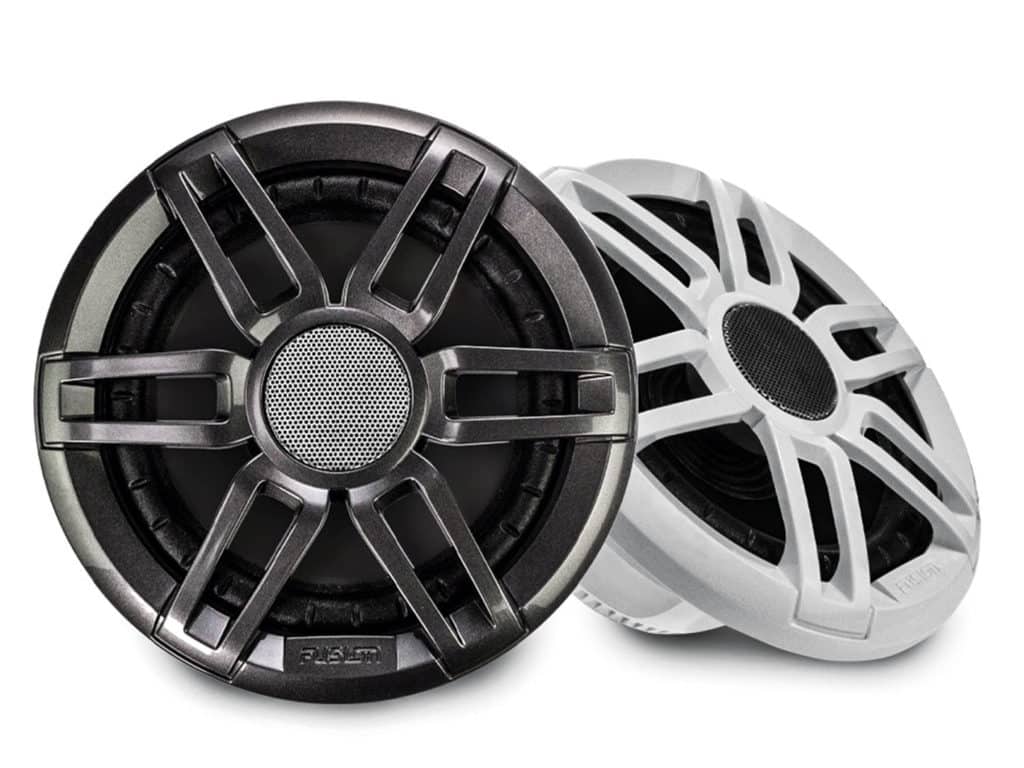
On the acoustic side, the 200-watt XS Series 6.5-inch speakers (they’re also available as 240-watt 7.7-inch speakers) and the 600-watt subwoofer are built to IP65 standards and are available with interchangeable grilles to match one’s aesthetic preferences. And depending on your taste in style, the speakers can be purchased with optional red-green-blue LED accent lighting.
Garmin: The new-product announcements from Garmin fall into two categories: evolutionary and revolutionary. Garmin has been making (and refining) handheld marine GPS units since 1990, but what started as a metrics-only navigation device has evolved into the GPSMap 79 Series handheld, which delivers a graphically rich, full-color nav station that easily fits in one’s pocket. The handheld comes loaded with upgradable global base maps, or users can upgrade to the GPSMap 79sc, which comes standard with Garmin’s premium BlueChart g3 cartography. Both handhelds feature optically bonded, sunlight readable and scratch-resistant screens; a built-in three-axis compass; and the ability to get position information from the GNSS satellite constellation. Conveniently, the new handhelds also include 8 gigabytes of onboard memory that can store, say, 10,000 waypoints and 250 routes. The units’ batteries are good for up to 19 hours of navigation between refills.
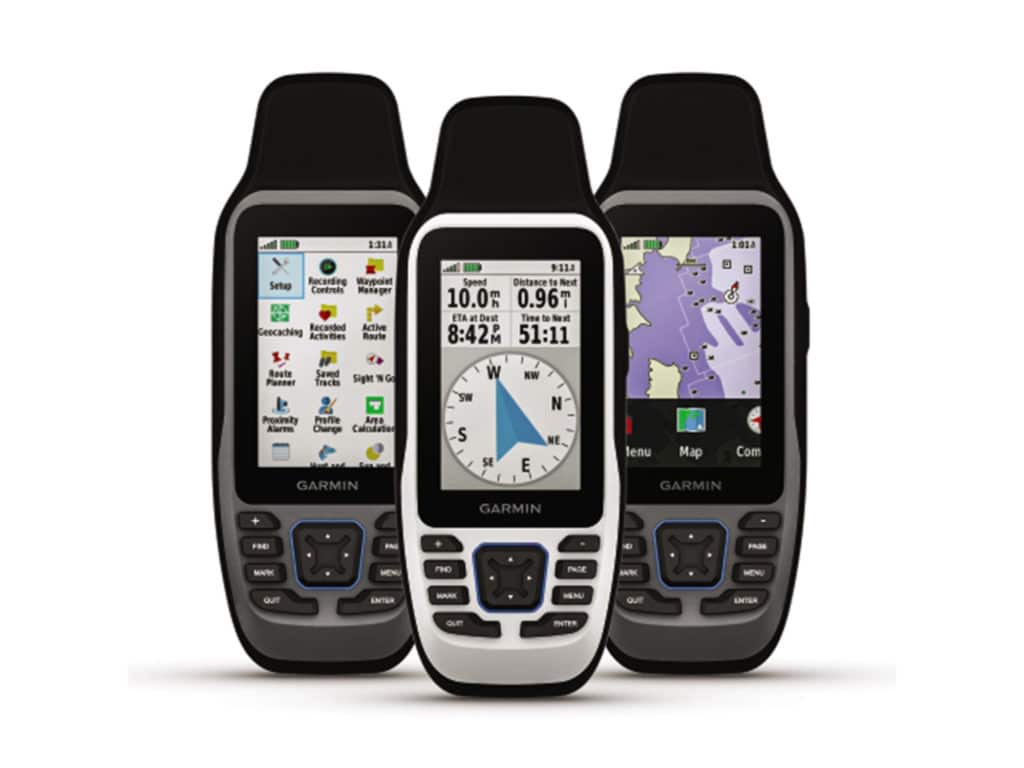
Garmin’s biggest new-equipment announcement isn’t available for the aftermarket (yet), but it’s highly innovative and designed to work on new boats up to 80 feet LOA. SurroundView is made up of an array of six Garmin-built 1080p color daylight video cameras, a dedicated black-box processing unit, a compatible Garmin chart plotter, and Garmin’s image-stitching wizardry, which the company honed through its work with its VIRB 360 cameras. The camera array consists of one forward-looking camera, two cameras each on port and starboard, and a single 180-degree-view stern-facing camera that’s mounted up high to provide stern clearance.
Once a SurroundView system has been factory installed and calibrated, it delivers a 360-degree bird’s-eye video view around the boat, as well as Distance Markers and Visual Bumpers. Distance Markers are similar to automotive-style backup graphics that give anyone on the helm a precise graphical reference for how far their sailboat is from a dock or other object, while Visual Bumpers are graphical (and user-defined) margins showing the water separating hulls from docks. Both Distance Markers and Visual Bumpers are overlaid atop SurroundView’s real-time video feed.
SurroundView employs color differentiation, artificial intelligence, and augmented reality to differentiate between water and objects. While this helps defang docking, the system can also differentiate between water and, for example, kayaks or dinghies.
As of this writing, SurroundView provides only visual warnings (other alarms are expected), and its sensor input is limited to its six-camera array, but down-the-road updates could pull in other technologies such as light detection and ranging technology (think of the driver-assist sensors in your car), high-precision GPS receivers (such as Garmin’s still-new multiband GPS xd24 sensor), vector cartography, additional artificial intelligence layers and, eventually, helm and throttle controls. (Expect this latter capability to start on the powerboat side.)
Icom: VHF communications isn’t new, but this doesn’t mean innovations can’t still be realized. Icom’s M510 is the first in situ VHF from a mainstream VHF manufacturer that gives users wireless command over their radio using a paired smartphone. The M510 broadcasts at 25 watts and can be paired via Wi-Fi with up to three wireless devices that are running Icom’s RS-M500 mobile app (Android- or iOS-friendly). Icom makes two versions of the fixed-mount radio: the standard M510 and the M510-AIS, the latter of which includes a built-in Automatic Identification System listen-only receiver. Aside from AIS, both versions feature identical 3.5-inch color LCD screens, active noise cancellation and NMEA 0183 connectivity (users can add an optional CT-M500 box to add NMEA 2000 compatibility).
Iris Innovations: All sailors can appreciate the benefits of bolstering onboard security, especially when it comes in an affordable package. Iris Innovations’ S460 camera comes bundled in a rugged 316 stainless-steel dome, boasts an IP66 weatherproof rating, and features a 1.8-millimeter wide-angle lens that delivers a 160-degree horizontal field of view, plus infrared capabilities with a range of 30 feet. The IP-enabled high-definition camera has 3-megapixel sensors and is compatible with B&G and Raymarine chart plotters, TimeZero, and some PC-based navigation software. The camera measures 2.28-by-2.36 inches; once fitted, it supports multiple streams and allows users to tweak a menu of settings, including brightness, contrast and color.
KVH: One of the few silver linings from the past two years is the greater acceptance of working outside the office, provided, of course, that one has a reliable internet connection. KVH’s TracPhone LTE-1 Global gives cruisers the ability to access the internet using cellular networks from up to 20 miles offshore in more than 150 countries. The TracPhone LTE-1 Global accomplishes this by leveraging a high-gain antenna array, a GPS receiver, automatic network switching, and built-in Wi-Fi that allows the system to share its cellular-based connectivity with paired smartphones, tablets and PCs. While speed and coverage depend on local third-party cellular providers and the mounting location of each system’s onboard antenna (the higher the antenna, the better), KVH advises that under normal conditions, the TracPhone LTE-1 Global is fast enough to support video conferencing, HD-content streaming, web browsing, email and voice calls. Users buy their airtime from KVH as well, so hardware and service are compatible. The LTE-1 comes bundled in a sailboat-friendly dome that measures 13.5-by-13.3 inches and weighs 6.25 pounds; its single power and data cable purportedly makes for a DIY-friendly installation.
Sirius Signal: Back in the proverbial day, sailors had to remember to check the expiration date of their flare kit or else risk a write-up from the Coasties. Sirius Signal changed all that with its emergency flares that replace pyrotechnics with United States Coast Guard-approved LED-based devices. The company’s newest safety-minded offering, the Supplemental Alert System, takes this to new heights (literally) by coupling a high-powered electronic visual distress device—essentially an electronic flare—with a standard masthead light. Once installed, users can switch between standard navigation and anchoring modes and the system’s emergency mode, the latter of which triggers the alert system to flash SOS in both visible color (red-orange-cyan) and infrared light. The system’s masthead mounting location maximizes its visibility; this is compounded by the C-1002’s ultra-bright array of 13 LEDs, which Sirius Signal purports to be five times brighter than any other USCG-approved electronic visual device. While it’s expected that the SAS will be sold as an original-equipment option on new builds, it’s hoped that it will also be available as an aftermarket upgrade.
Sneak Peek at New Radars
While we’re planning a more in-depth look at radars later this year, both Furuno and Garmin have introduced dome enclosed radars that warrant mention now.
Furuno’s DRS2DNXT features a 19-inch enclosed antenna that delivers 48 nautical miles of range using a solid-state transmitter. The system relies on Furuno’s proprietary Target Analyzer feature, which uses Doppler technology to assign various colors to targets to graphically differentiate potentially dangerous ones from benign objects, vessels and landmasses. Additional features include Furuno’s proprietary RezBoost beam sharpening, dual-range mode and Auto Acquire, the latter of which automatically tracks all targets within 3 nautical miles of the radar.
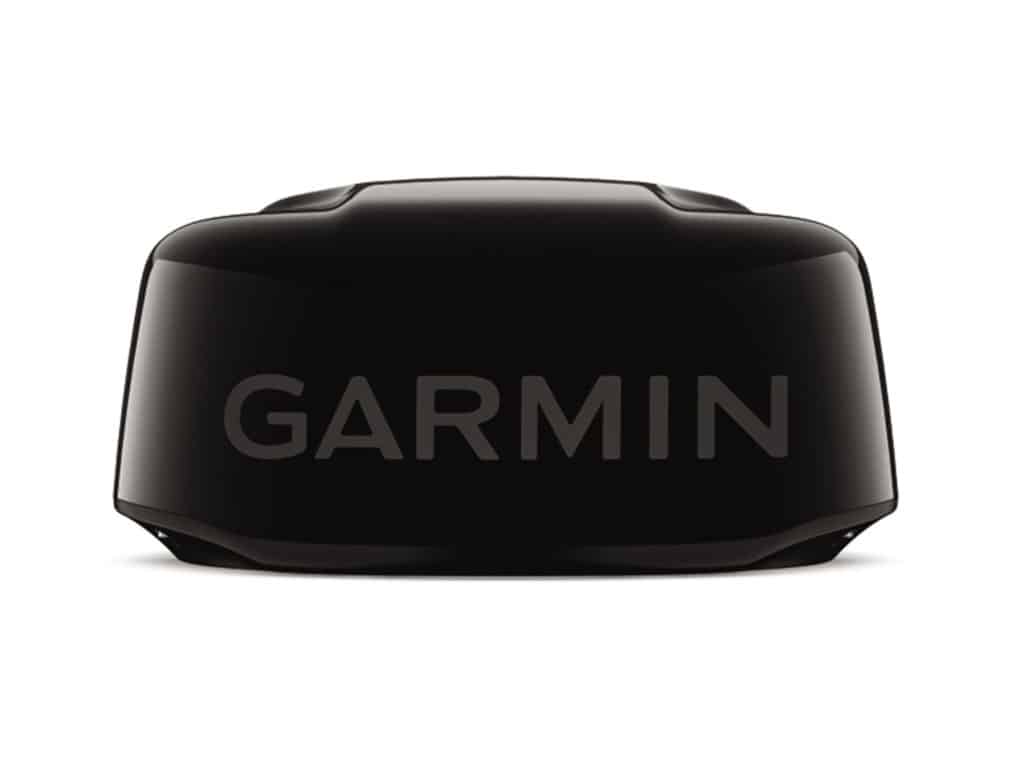
Garmin’s GMR Fantom 18X and GMR Fantom 24x radars employ the same architecture and deliver similar feature sets using different antenna lengths. The radars can be configured with either an 18-inch or 24-inch antenna, both with 50 watts of transmitting power, and—in a Garmin first—black or white radome enclosures. Garmin’s newest Fantoms all leverage solid-state transmitters and deliver Garmin’s proprietary Doppler processing, called MotionScope, dual-range mode and a sailor-friendly power-save mode.
Stay tuned!
Charge It
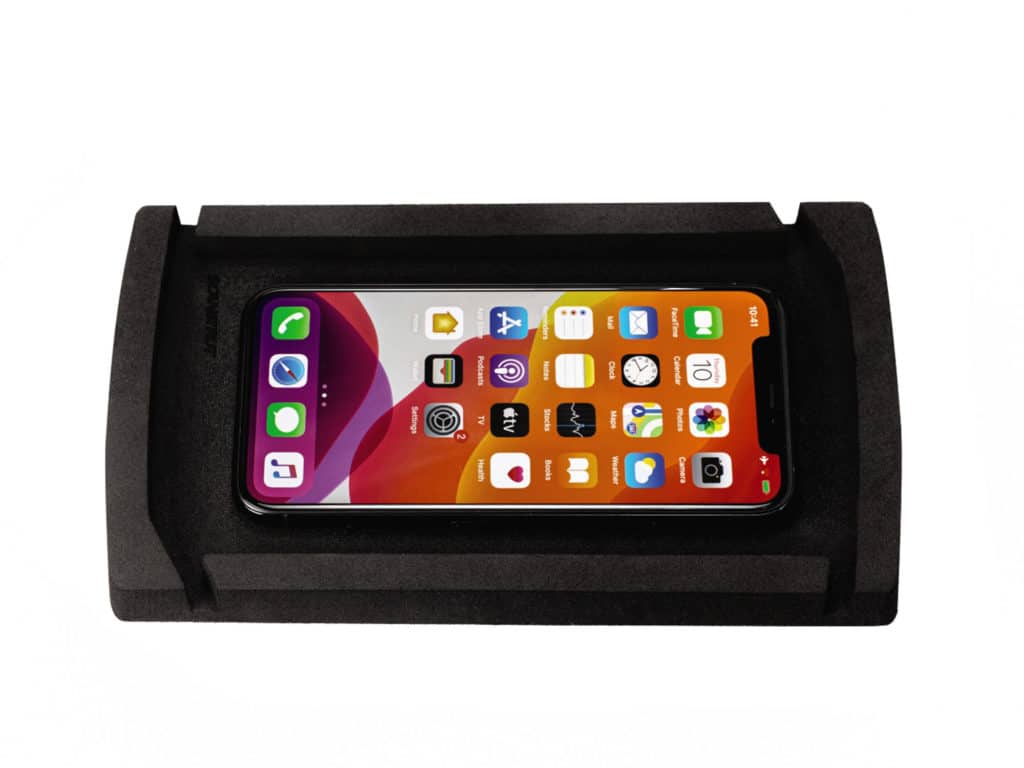
CRW0222_RV104
If you’re looking for an easy and secure way to charge your compatible smartphone while aboard, check out
Scanstrut’s ROKK Wireless Catch, which sells for $110. Once installed, cruisers simply place their smartphone on the mat, touchscreen side up, and the 12-/24-volt charger will replenish the device’s spent DC juice. Catch’s closed-cell foam construction and use of raised edges provide a safe harbor for a smartphone to hang out in lumpy seas, with impact and vibration protection.
Swimming with Smartphones
If snorkeling or diving are part of your sailing program, check out SeaLife’s underwater smartphone housing, which is now compatible with most Android and Apple smartphones. The iPhone and Android armor protects phones down to 130 feet, and its design features large, user-friendly control and shutter-release buttons. Users can check the integrity of their case’s seal using the app’s vacuum-pressure alarm, and a moisture sensor warns swimmers of any unexpected water ingress. Additionally, the app provides advanced-level camera settings, including exposure, focus and the ability to shoot in RAW format. Combined, they can add sophistication to your phone’s image-capturing capabilities.
Vendor List
Airmar: $650-$1,350
Furuno: call for pricing
Fusion Entertainment: from $170
Garmin: from $300
KVH: $1,700
Icom:.$600
Iris Innovations: $450
Scanstrut: $110
SeaLife: $300
Sirius Signal: call for pricing
David Schmidt is CW’s electronics editor.



